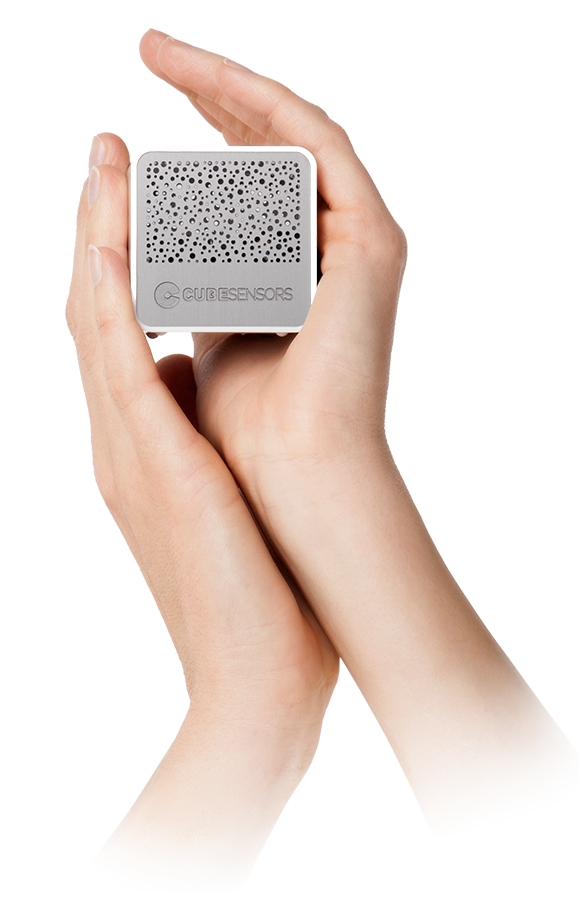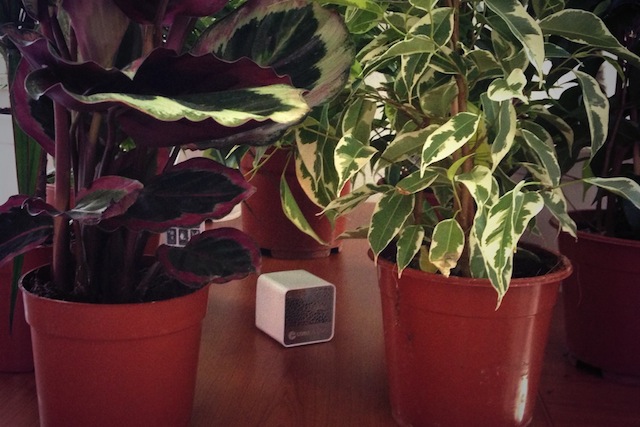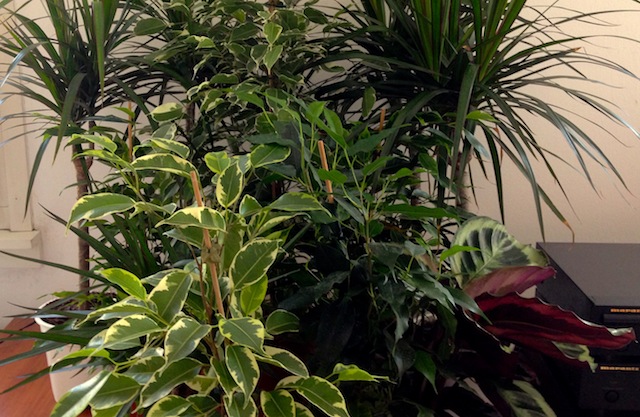Office experiment: Do air-purifying plants improve air quality?
by Alja Isakovic
If you’re following us either on Facebook, Twitter or Google+, you might have noticed that we decided to do a little experiment last week. Armed with iPhones and the Wikipedia page on air-filtering plants, we brought into our office eleven plants of five different kinds that are supposedly beneficial for air quality (and were available at the nearby plant store): Calathea, Dracaena Marginata, Ficus Benjamina, Ficus Mix, Ficus Twilight. On top of that, we almost got a meat eating plant for our CTO, but that’s a story for another time.
Houseplants, VOCs and air quality
At the office, we placed one of our prototype Cubes in the middle of the newly created plant jungle, kept the windows closed, and started paying even more attention to the Cube’s air quality data. You might already know that our CubeSensors use a VOC (Volatile Organic Compounds) sensor to determine air quality.
The theory, originating from a NASA lab research back in the 1980’s, is that some plants are capable of removing certain kinds of VOCs, such as formaldehyde, from the air. Interestingly enough, plants are also known to use VOCs as a form of communication in case of impeding danger. We kept insects and all our cats, dogs, and children out of the office, so it’s pretty safe to say that our plants had no need to trigger these kinds of alerts.
The experiment begins with impressive results!
We were at the edge of our seats in the first few hours of the experiment. The green line of the chart below shows VOC levels in the bigger shared office, filled with plants, where we were working during the day. The blue line shows the VOC levels of the connected smaller, temporarily unoccupied office. The blue background on the chart shows recommended VOC levels, the lines on the horizontal axis mark hours.
In the first few hours of the day, you can see the levels we usually observe at the office. VOC levels rise in the morning when we arrive at the office, and are slightly higher in the occupied office due to our presence (green line).
The sudden dip in the green line is when we went shopping for plants. We did accidentally disconnect the shared office Cube from its power source while moving things around to accommodate the new visitors, so the dip and initial lower values are understandable. (Note: the Cubes that we’ll be shipping will of course have rechargeable batteries, but some of our current prototypes don’t.)
After about an hour, the VOC sensor on the shared office Cube (green line) started coming back to its senses and the VOC levels start rising again, almost in sync with the levels of the smaller office. This is again expected behavior, as the CubeSensors team was working hard, sweating over all the little details of Cube magic. But the funny thing is that the green line of the occupied office with plants should have risen over the blue line, where there was nobody breathing, sweating or eating! Were the plants working their magic?
Not so fast: are air-purifying houseplants a myth?
We returned to the office the next day, excited to repeat the success of the previous day. But guess what? Didn’t happen. The green line was consistently a little over the blue line, as it had been with no plants involved. What we saw on the first day was perhaps just beginner’s luck or the VOC sensor that was still coming to its senses. We did try talking to the plants, playing soothing music, but couldn’t repeat the result.
To be honest, we didn’t really expect a magic cure for bad air quality. The US Environmental Protection Agency (EPA) notes in An Introduction to Indoor Air Quality (IAQ):
“Over the past few years, there has been some publicity suggesting that houseplants have been shown to reduce levels of some chemicals in laboratory experiments. There is currently no evidence, however, that a reasonable number of houseplants remove significant quantities of pollutants in homes and offices. Indoor houseplants should not be over-watered because overly damp soil may promote the growth of microorganisms which can affect allergic individuals.”
Oh well, it was worth giving it a try nonetheless. Does this mean we’re getting rid of the plants? No, I think we’ll keep them for a while, see if anything interesting comes up along the way. They might not be the magic bullet for fixing indoor air quality, but it is relaxing to rest your eyes on them in between breaks.
Thinking about getting houseplants?
Our final verdict is that plants are not a replacement for air-filtering systems or the good ol’ opening the windows despite all the “Top 10 air-purifying houseplants” lists you can find online. Sure, all plants will turn some carbon dioxide (CO2) into oxygen, but the best way to achieve good air quality is by getting rid of sources of indoor air pollution, with a little help from good ventilation.
That said, we do think that plants can be a nice decorative addition to homes and offices, as long as you take proper care of them. While forgetting to water plants is a common concern, over-watering is even more dangerous if it leads to mold growth. And if you’re a cat lover like myself, don’t forget that a lot of common houseplants are toxic for cats or dogs! Always make sure to go with pet-friendly plants that won’t put your furry friends at risk.
I hope you enjoyed reading about our little office experiment. If there are other home or office experiments you’d like to see us try while we wait for the first proper Cubes to come out of the production line, please do let us know!



